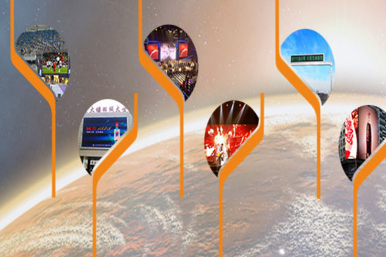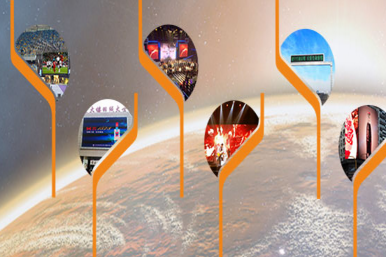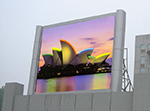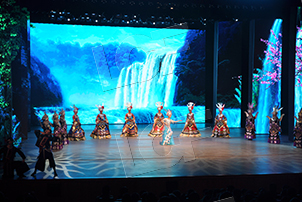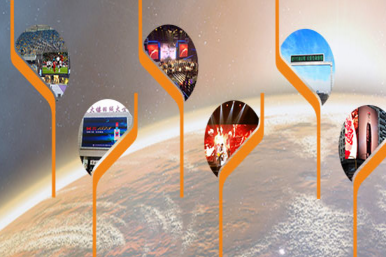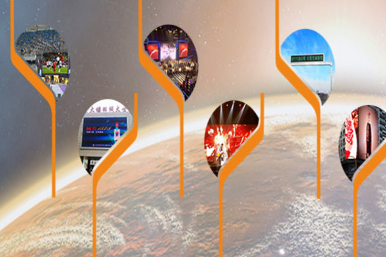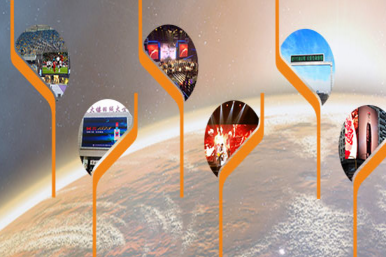Publisher: Supplier of LED Display Time: 2017-11-23 11:44 Views: 4286
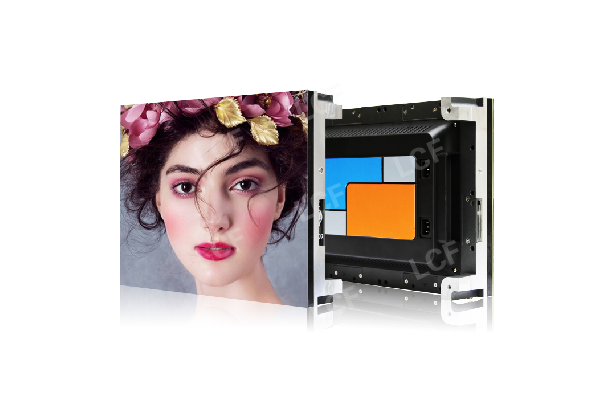
At present, the price of small-pitch LED display products is relatively high, mainly concentrated in the high-end market, but under the rapid growth momentum of small-pitch and the trend of gradual decline in prices, it still brings LCD and DLP to traditional indoor large-screen splicing products. Not a small pressure. In the future indoor large-screen splicing market, who will control the ups and downs? Let us analyze them one by one.
1. Comparison of the display effect of small-pitch LED display, LCD, and DLP: The performance of the small-pitch LED display is very eye-catching in terms of display performance. Due to the fundamental difference in light-emitting principle and structure, small-pitch LED products can not only achieve seamless splicing, but also have a very wide color gamut and excellent color performance. These are not comparable to DLP and LCD, and the response speed is fast. Problems such as ghosting and smearing are almost a rewrite of the previous large-screen indoor display; DLP performs smoothly. In terms of splicing gaps and mirror reflection, it performs better than LCD, but it cannot be compared with small pitch. It is not as good as LCD display in terms of resolution and heat generation, but it is better than small pitch display. In general, DLP The overall performance is "moderate", except for the bottom of the brightness, the basic performance is good; the biggest shortcoming of LCD is that the splicing gap is too large, even the 1.8 mm splicing seam is within the range visible to the naked eye, which has an impact on the overall visual performance. Secondly, the picture is greatly affected by external light, and the problem of easy reflection has yet to be solved. However, it still has great advantages in terms of resolution, heat generation, maintenance, etc., and indoor display does not require high brightness, coupled with low price and low maintenance cost, LCD still has more obvious advantages in indoor display. The mainstay in the large-screen splicing market.

2. Comparison of market performance of small-pitch LED display, LCD, and DLP: 2016 was called the first year of the outbreak of small-pitch LED products, and in 2017, it took a steady step towards widespread application and successfully gained a place in the field of indoor display. According to China's large-screen splicing market data released by research institutions in the first half of 2017, LCD splicing sales reached 2.16 billion yuan, accounting for 48%, an increase of 33.6% year-on-year; small-spacing sales were 1.59 billion yuan, accounting for 35%, an increase 73.8%; DLP splicing is 730 million yuan, accounting for 16%, and the growth rate is -8.6%. It can be seen that in the field of large-screen splicing, LCD still occupies a major position and maintains a considerable growth rate. The current share of small-pitch LED display products is not high, but an astonishing growth rate of more than 70% has been foreseen, and its future market expectations are comparable Considerable, while DLP is not only unsatisfactory in sales, but also showing a negative growth trend, the market prospects may be worrying.
3. The disadvantages of small-pitch LED displays cannot be ignored: firstly, the problem of brightness, which is almost unaffected by external light such as sunlight, lights, etc., making LED displays the dominant player in the outdoor field. However, when such features are placed indoors, they will face excessive brightness. Gao's embarrassment. Especially used in the field of security monitoring, workers need to face the screen for a long time, too high brightness is not a good visual experience; secondly, stability issues, for traditional LED displays, the dead light rate is generally controlled below 1 in 10,000 , But for high-density small-pitch LED displays, the probability of one in ten thousand is obviously unable to meet the demand for high-quality screen display, and reducing the dead-light rate has become an inevitable development trend. Small-pitch LED displays are mostly used in high-end display fields. The requirements are even higher; the last is the cost issue. The purchase cost of small pitch itself is higher than that of LCD, while the heat dissipation cost and electricity cost of LED display are higher than that of LCD and DLP. The superposition of the two aspects makes it overall The use cost remains high, making small-pitch LED screens more difficult to enter the middle and low-end markets with huge demand.
Compared with LCD and DLP, the small-pitch LED display has many disadvantages. The high cost and the once high market price is the biggest obstacle to its entry into the low-end indoor display market. Whether the small-pitch LED display can maintain the momentum of rapid growth and grab the market share of LCDs that perform well in the market depends on the efforts of major LED display manufacturers.

